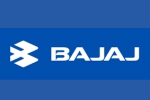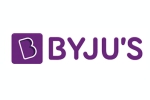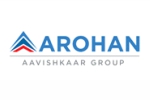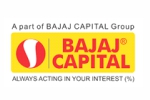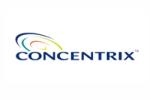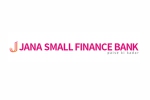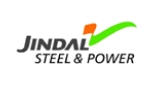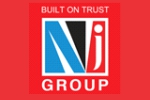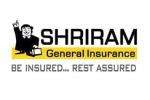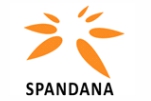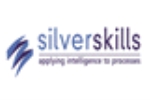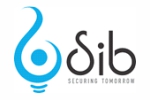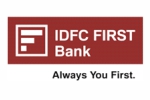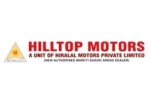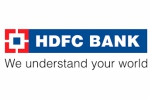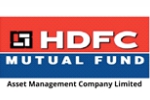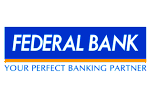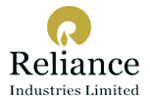



An M.Tech (Master of Technology) in High Rise and Green Building Construction is a specialized postgraduate program that focuses on the design, construction, and management of tall buildings (high-rise structures) while incorporating principles of sustainability and environmental consciousness in the construction process.
STRUCTURE OF M.TECH IN HIGHRISE and GREEN BUILDING CONSTRUCTIONEVALUATION SCHEMES
| SUBJECT CODE | SUBJECT | PERIODS | CREDITS | |||
| THEORY | L | T P | ||||
| 1 | WPEL-8102 | Structural Dynamics | 4 | 0 | 0 | 4 |
| 2 | WCESL-6102 | Advance Concrete Technology | 4 | 0 | 0 | 4 |
| 3 | WCESL-6111 | Advanced Structural Analysis | 4 | 0 | 0 | 4 |
| 4 | WCESL-6112 | Departmental Elective -I | 4 | 0 | 0 | 4 |
| LABORATORY | |||||||||
| 1 | WCESP-6111 | Advanced Structural Analysis-Lab | 0 | 0 | 2 | 1 | |||
| 2 | WPEP-8102 | Computing in Structures I-Lab | 0 | 0 | 2 | 1 | |||
| TOTAL | 16 | 0 | 4 | 18 | |||||
| Departmental Elective -I | |||||||||
| S.No. | Subject Code | Subject | |||||||
| 1 | WCESL-6211 | Construction Management | |||||||
| 2 | WCESL-6212 | Disaster Management | |||||||
| SUBJECT CODE | SUBJECT | PERIODS | CREDITS | |||
| THEORY | L | T | P | |||
| 1 | WCESL-6201 | Earthquake Resistant Design Of Structures | 4 | 0 | 0 | 4 |
| 2 | WCESL-6202 | Design of High Rise Structure | 4 | 0 | 0 | 4 |
| 3 | Finite Element Method | 4 | 0 | 0 | 4 | |
| 4 | Departmental Elective -II | 4 | 0 | 0 | 4 | |
| LABORATORY | ||||||
| 1 | WCESP-6201 | Computing in Structures II-Lab | 0 | 0 | 2 | 1 |
| 2 | WCESP-6202 | Advance Concrete Technology-Lab | 0 | 0 | 2 | 1 |
| TOTAL | 16 | 0 | 4 | 18 |
Departmental Elective-II
| S. No. | Subject Code | Subject |
| 1 | WCESL-6213 | Environmental Impact Assessment |
| 2 | WCESL-6215 | Waste Management |
| SUBJECT CODE | SUBJECT | PERIODS | CREDITS | ||||
| THEORY | L | T | P | ||||
| 1 | Departmental Elective -III | 4 | 0 | 0 | 4 | ||
| 2 | Departmental Elective –IV | 4 | 0 | 0 | 4 | ||
| LABORATORY | |||||||
| 1 | WCESD-6301 | MINOR DISSERTATION | 0 | 0 | 20 | 6 | |
| TOTAL | 8 | 0 | 20 | 14 | |||
Departmental Elective-III
Departmental Elective-IV
| S. No. | Subject | Subject | |
| Code | |||
| 1 | WCESL-6314 | Theory of Plates and Shells | |
| 2 | WCESL-6315 | Stability of Structures | |
| SUBJECT CODE | SUBJECT | PERIODS | CREDI | |||
| TS | ||||||
| THEORY | L | T | P | |||
| 1. | WCESD-6401 | DISSERTATION | 0 | 0 | 32 | 16 |
| TOTAL | 0 | 0 | 32 | 16 | ||
Subject: Advanced Structural Analysis LTPC
Code: WCESL-6111 4 004
UNIT 1: Matrix Algebra – methods for matrix inversion and solution of simultaneous equations – band and sparse matrix techniques stiffness and flexibility matrices of structural elements – various co-ordinate system and their transformation and synthesis matrix formulation of force and displacement methods – member approach.
UNIT 2: Finite element concept in Engineering Analysis – Displacement model shape functions and element properties. Analysis of plane stress/strain – axi-symmetric stress analysis.
UNIT 3: Weighted residual methods and variational formulation of Finite Element Analysis.
Isoparametric element –– Numerical integration – assemblage of elements. Solution techniques –
Finite element programming – use of package programmes.
REFERENCE BOOK
1 Numerical Methods for Engineers Chopra
2 Finite element procedure K.J.Bathe
3 Matrix analysis of frame structure Wever/Gere
4 Structural analysis – A matrix approach G.S.Pandit and Gupta
5 Numerical Methods for Engineers Steven C. Chapra, Raymond P. Canale
Subject: Bridge Engineering L TPC
Code: WCESL-6112 4 0 0 4
UNIT 1:
Introduction, historical review, Engineering and aesthetic requirements in bridge design, Introduction to bridge codes.
UNIT 2:
Economic evaluation of a bridge project. Site investigation and planning; Factors affecting scour and its evaluation.
UNIT 3:
Bridge foundations - open, pile, well and caisson. Piers, abutments and approach structures.
UNIT 4:
Superstructure - analysis and design of right, skew and curved slabs. Girder bridges - types, load distribution, design.
UNIT5:
Introduction to long span bridges - cantilever, arch, cable stayed and suspension bridges.
REFERENCE BOOK
1 Principle & Practice of Bridge Engineering S.P. Bindra- Dhanpat Rai
2 Bridge Engineering Demetrios E. Tonias, Jim J. Zhao
3 Design of Bridge Structures Jagadish & Jayaram – Prentice Hall
4 Bridge Engineering S. Ponnuswamy (Manohar Publishers & Distributor)
|
|
Paper Code |
: WCESP-6101 |
LTPC |
|
|
Paper: Structural Lab |
0 0 |
|
|
2 |
1 |
|
|
List of Experiments:
REFERENCE BOOK
Paper: Earthquake Resistant Design of Structures LTPC
Code: WCESL-6201 4004
UNIT - I Engineering Seismology: Earthquake phenomenon cause of earthquakes-Faults- Plate tectonics-Seismic waves- Terms associated with earthquakes-Magnitude/Intensity of an earthquake-scales-Energy released-Earthquake measuring instruments-Seismo scope, Seismograph, accelero-graph-Characteristics of strong ground motions- Seismic zones of India.
UNIT - II Conceptual design: Introduction-Functional planning-Continuous load path-Overall form-simplicity and symmetry-elongated shapes-stiffness and strength-Horizontal and Vertical members-Twisting of buildings-Ductility-definition-ductility relationships flexible buildings-framing systems-choice of construction materials-unconfined concrete-confined concrete-masonry-reinforcing steel. Introduction to earthquake resistant design: Seismic design requirements-regular and irregular configurations-basic assumptions-design earthquake loads-basic load combinations-permissible stresses seismic methods of analysis-factors in seismic analysis-equivalent lateral force method dynamic analysis-response spectrum method-Time history method.
UNIT - III Reinforced Concrete Buildings: Principles of earthquake resistant deign of RC members, Structural models for frame buildings- Seismic methods of analysis- Seismic deign methods- IS code based methods for seismic design- Seismic evaluation and retrofitting. Vertical irregularities- Plan configuration problems- Lateral load resisting systems. Determination of design lateral Forces-Equivalent lateral force procedure- Lateral distribution of base shear. Masonry Buildings: Introduction-Elastic properties of masonry assemblage- Categories of masonry buildings- Behavior of unreinforced and reinforced masonry walls- Behavior of walls-Box action and bands- Behavior of infill walls, Improving seismic behavior of masonry buildings-Load combinations and permissible Stresses-Seismic design requirements- Lateral load analysis of masonry buildings.
UNIT - IV Structural Walls and Non-Structural Elements: Strategies in the location of structural walls- sectional shapes- variations in elevation- cantilever walls without openings – Failure mechanism of non-structures- Effects of non-structural elements on structural system-Analysis of non-structural elements-Prevention of non-structural damage Isolation of non-structures.
UNIT - V Ductility Considerations in Earthquake Resistant Design of RC Buildings: Introduction Impact of Ductility- Requirements for Ductility- Assessment of Ductility- Factors affecting Ductility- Ductile detailing considerations as per IS 13920. Behavior of beams, columns and joints in RC buildings during Earthquakes-Vulnerability of open ground storey and short columns during earthquakes. Capacity Based Design: Introduction to Capacity Design, Capacity Design for Beams and Columns-Case studies.
REFERENCE BOOKS:
Paper: Advance Concrete Technology LTPC
Paper Code: WCESL-6202 4004
Unit-I: Review of Materials of Concrete
Properties of fresh concrete:
Mixing and batching, Workability, factors affecting workability, Measurement of workability, various tests-segregation and bleeding. Vibration of concrete. Types of vibrators and their influence on composition.
Properties of Hardened concrete:
Maturity concept strength of concrete-factors effecting strength. Short terms and long terms properties of concrete Tests-Relationship between various mechanical strengths of concrete. Curing of concrete. Methods of curing. Stress- Strain curves for concrete.
Unit-II: Mix design of concrete
Basic consideration. Process of mix design. Factors in the choice of mix proportions and their influence. Quality control. Various methods of mix design. I.S. code method. British and ACI methods.
Unit-III: Admixtures used in concrete
Classification of admixtures. Chemical and mineral admixtures. Influence of various admixtures on properties of concrete. Applications. Concept of ready mixed concrete. Fly ash concrete-properties and proportion of fly ash applications. Durability of concrete.
Unit-IV: High Strength and High Performance Concrete
High Strength concrete. Light Weight Concrete and High Density Concrete-Specialties and applications, Recycled aggregate Concrete-Concept, properties and applications
Unit-V: Fiber Reinforced Concrete
Need for fiber reinforced concrete (FRC), Mechanism of FRC, Types of Fibers, Fibreshotcrete, Ferro cement, Self-Compacting Concrete-Design principles, Properties and applications, Quality control aspects of concrete.
REFERENCE BOOK
|
1. |
Mehta |
P.K. |
and |
Paulo |
J.M.M., Concrete-Microstructure-Properties |
|
|
and Material, Mc. Graw Hill Publishers,1997. |
||||
Paper: Advance Concrete Technology Lab LTPC
Paper Code: WCESP-6202 0021
List of Experiments:
Books Recommended/Suggested Reading:
Subject: Advanced Foundation Engineering LTPC
Code: WCESL-6211 4004
UNIT 1:
Bearing capacity: Bearing capacity of shallow foundation in layered soils, Footings on slopes, Foundation with uplift or tension forces.
UNIT 2:
Settlements: Settlement Analysis of shallow foundations in sand, clay, and layered deposits, Reliability of settlement calculations, Structural tolerances.
UNIT 3:
Design of rectangular footings, combined footings and mat foundations.
UNIT 4:
Deep foundations: Pile foundations under vertical and lateral loads, Negative skin friction of piles; Uplift capacity of piles, Well foundations.
UNIT 5:
Foundations on expansive soils; Introduction to soil dynamics and machine foundation.
REFERENCE BOOK
1 Foundation Analysis & Design J.E. Bowels (Mc Graw Hill)
2 Principles of Foundation Engg. B.M. Das (PWS Publishing
3 Pile Foundation- Analysis & Design Poulus & Davis
4 Constructional methods in Foundation Engineering Koener
Foundation design and construction Tomlinson .M.J. 6 Raft foundation design and analysis with practical approach Gupta. S. C
Subject: Advanced Pre stressed Concrete LTPC
Code: WCESL-6212 4004
UNIT 1. Introduction to pre stressed concrete: types of prestressing, systems and devices, materials, losses in prestress. Analysis of PSC flexural members: basic concepts, stresses at transfer and service loads, ultimate strength in flexure, code provisions.
UNIT 2: Statically determinate PSC beams: design for ultimate and serviceability limit states for flexure, analysis and design for shear and torsion, code provisions.
UNIT 3: Transmission of prestress in pretensioned members; Anchorage zone stresses for posttensioned members.
UNIT 4 : Statically indeterminate structures - Analysis and design - continuous beams and frames, choice of cable profile, linear transformation and concordancy.
UNIT 5: Composite construction with precast PSC beams and cast in-situ RC slab - Analysis and design, creep and shrinkage effects. Partial prestressing - principles, analysis and design concepts, crack width calculations. Analysis and design of prestressed concrete pipes, columns with moments.
REFERENCE BOOK:
1 Design of Prestressed Concrete Structures Lin T.Y., Asia Publishing House, 1955.
2 Prestressed Concrete Krishnaraju N., Tata McGraw Hill, New Delhi, 1981.
3 Limited State Design of Prestressed Concrete GuyanY., Applied Science Publishers, 1972 4 I
S: 1343- Code of Practice for Prestressed Concrete –
5 IRC: 112
Paper: Environment Impact Assessment LTPC
Paper Code: WCESL-6213 4004
Unit – I
Introduction: The Need for EIA, Indian Policies Requiring EIA, The EIA Cycle and Procedures, Screening, Scoping, Baseline Data, Impact Prediction, Assessment of Alternatives, Delineation of Mitigation Measure and EIA Report, Public Hearing, Decision Making, Monitoring the Clearance Conditions, Components of EIA, Roles in the EIA Process. Government of India
Unit – II
EIA Methodologies: Environmental attributes -Criteria for the selection of EIA methodology, impact identification, impact measurement, impact interpretation and Evaluation, impact communication, Methods-Adhoc methods, Checklists methods, Matrices methods, Networks methods, Overlays methods. EIA review- Baseline Conditions -Construction Stage Impacts, post project impacts.
Unit – III
Ministry of Environment and Forest Notification (2000), List of projects requiring Environmental clearance, Application form, Composition of Expert Committee, Ecological sensitive places, International agreements.
Unit – IV
Environmental Legislation and Life cycle Assessment: Environmental laws and protection acts, Constitutional provisions-powers and functions of Central and State government, The Environment (Protection) Act 1986, The Water Act 1974, The Air act 1981, Wild Life act 1972, Guidelines for control of noise, loss of biodiversity, solid and Hazardous waste management rules. Life cycle assessment: Life cycle analysis, Methodology, Management, Flow of materials- cost criteria-case studies.
Unit – V
Case Studies: Preparation of EIA for developmental projects- Factors to be considered in making assessment decisions, Water Resources Project, Pharmaceutical industry, thermal plant, Nuclear fuel complex, Highway project, Sewage treatment plant, Municipal Solid waste processing plant, Air ports.
REFERENCE BOOKS:
Paper: Finite Element Method LTPC
Code: WCESL-6215 4004
UNIT I Introduction: Concepts of FEM - steps involved - merits and demerits - energy principles– discrimination - Raleigh - Ritz method of functional approximation. Principles of Elasticity: Stress equations - strain displacement relationships in matrix form plane stress, plane strain and axi-symmetric bodies of revolution with axisymmetric loading.
UNIT II One dimensional FEM: Stiffness matrix for beam and bar elements - shape functions foe ID elements. Two dimensional FEM: Different types of elements for plane stress and plane strain analysis - displacement models - generalized coordinates - shape functions - convergent and compatibility requirements - geometric invariance - natural coordinate system - area and volume coordinates - generation of element stiffness and nodal load matrices
UNIT III Isoparametric formulation: Concept - different isoparametric elements for 2D analysis - formulation of 4-noded and 8-noded isoparametric quadrilateral elements - Lagrange elements - serendipity elements. Axi Symmetric Analysis: bodies of revolution - axi symmetric modeling - strain displacement relationship - formulation of axi symmetric elements. Three dimensional FEM: Different 3-D elements-strain-displacement relationship– formulation of hexahedral and isoparametric solid element.
UNIT IV Introduction to Finite Element Analysis of Plates: basic theory of plate bending - thin plate theory - stress resultants - Mindlin's approximations - formulation of 4-noded isoperimetric quadrilateral plate element – Shell Element.
UNIT V Introduction to non – linear analysis – basic methods – application to Special structures.
REFERENCES BOOKS:
Paper: Stability of Structures LTPC
Code: WCESL-6311 4004
UNIT I Beam Columns: Differential equations for beam columns- beam columns with concentrated loads – continuous lateral loads-couples- beam columns with built in ends – continuous beams with axial load – application of trigonometrically series – Effects of initial curvature on deflections – Determination of allowable stresses.
UNIT - II Elastic Buckling of bars and frames: Elastic Buckling of straight columns – Effect of shear stress on buckling – Eccentrically and laterally loaded columns- Buckling of frames-large deflections of buckled bars-Energy methods- Buckling of bars on elastic foundations- Buckle line of bar with intermediate compressive forces - Buckling of bars with change in cross-section– Effect of shear force on critical load- built up columns.
UNIT - III In-Elastic Buckling: Buckle line of straight bar- Double modulus theory – Tangent modulus theory, Inelastic lateral Buckling. Experiments and design formulae: Experiments on columns – Critical stress diagram – Empirical formulae for design – various end conditions.
UNIT - IV Torsion Buckling: Pure torsion of thin walled bars of open cross section – Non- uniform torsion of thin walled bars of open cross section- Torsional buckling – Buckling by torsion and flexure.
UNIT – V Lateral buckling of simply supported Beams: Beams of Rectangular cross-section subjected to pure bending. Buckling of simply supported Rectangular plates: Derivation of equation of plate subjected to constant compression in one and two directions.
REFERENCES BOOKS
Paper: Advance Concrete Design LTPC
Paper Code: WCESL-6312 4004
Unit 1
Yield line theory for slabs – Basic principles – methods of yield line analysis. Deep beams – analysis – design as per BIS – design using strut and tie method. Chimneys: Analysis of stresses in concrete chimneys – uncracked and cracked sections – codal provisions – design of chimney.
Unit 2
Large span concrete roofs: Introduction – classification – behaviour of flat slabs – direct design and equivalent frame method – codal provisions – waffle slabs. Shells and Folded plates: Forms of shells and folded plates – structural behaviour of cylindrical shell and folded plate – method of analysis – membrane analysis – beam arch approximation – codal provisions – design of simply supported circular cylindrical long shells and folded plates.
Unit 3
Bridges: General – IRC Bridge code – loading standards – impact effect – wind load – longitudinal forces – centrifugal forces – force due to water currents – buoyancy effect – temperature effects – secondary stresses – erection – seismic force. Design of slab culvert – R.C box culverts – T-beam bridges – Concept on design of continuous bridges, balanced cantilever bridges, arch bridges and rigid frame bridges.
REFERENCE BOOKS
Papar: Plastic Analysis & Design x
Code: WCESL-6314 4004
UNIT – I Analysis of Structures for Ultimate Load: Fundamental Principles – statical method of Analysis – Mechanism method of analysis – Method of analysis, Moment check – Carry over factor – Moment Balancing Method.
UNIT - II Design of Continuous Beams: Continuous Beams of uniform section throughout – Continuous Beams with different cross-sections.
UNIT - III Secondary Design Problems: Introduction – Influence of Axial force on the plastic moment – influence of shear force – local buckling of flanges and webs – lateral buckling – column stability.
UNIT - IV Design of Connections: Introduction – requirement for connections – straight corner connections – Haunched connection – Interior Beam-Column connections.
UNIT - V Design of Steel Frames: Introduction – Sinole span frames – simplified procedures for Sinole span frames – Design of Gable frames with Haunched Connection. Ultimate Deflections: Introduction – Deflection at ultimate load – Deflection at working load – Deflections of Beams and Sinole span frames.
REFERENCE BOOK
Paper: Composite Material L T P C
Code: WCESL-6315 4 0 0 4
UNIT 1 Introduction: Requirements of structural materials, influence of nature of materials in structural form, Nature of structural materials- Homogeneous materials, composite materials. UNIT - II Macro mechanical Properties of composite Laminae: Introduction, Assumptions and Idealizations, Stress Strain relationships for composite Laminae- Isotropic, Orthotropic laminae, Strength Characteristics- Basic concepts, Strength hypothesis for isotropic and Orthotropic laminae. Macro mechanical composite Laminae: Introduction, and Limitations, Analysis of Assumptions characteristics of glass reinforced laminaeStiffness Stress- Strain relationships in continuous, discontinuous fibre laminae, Strength discontinuous characteristi cs of glass reinforced laminaeStrengths in continuous, fibre laminae.
UNIT - III Behaviour of Glass Fibre-Reinforced laminates: Introduction, Stiffness characteristics of Laminated composites-Behaviour of Laminated beams and plates, Strength characteristics of Laminated composites- Strength analysis and failure criteria, Effect of inter laminar structures. Glass Reinforced Composites: Introduction, Continuously reinforced laminates- uni-directionally and multi directionally continuously reinforced laminates, Discontinuously reinforced laminates – Stiffness and Strength properties.
UNIT - IV GRP properties relevant to structural Design: Introduction, Short-term strength and stiffness-Tensile, Compressive, Flexural and Shearing. Long term strength and stiffness properties, Temperature effects, Effect of fire, Structural jointsAdhesive, mechanical, Combinational, Transformed sections.
UNIT - V Design of GRP Box Beams: Introduction, loading, span and cross-sectional shape, Selection of material, Beam manufacture, Beam stresses, Experimental Behaviour, Effect on Beam performance-Modulus of Elasticity, Compressive Strength, I value, prevention of compression buckling failure, Behaviour under long term loading. Design of Stressed skinned roof structure: Introduction, loading and material properties, preliminary design, and computer analysis.
REFERENCE BOOK

Live & Recorded Lectures with cutting-edge tutorials.

Interact and Collaborate with Peers and Faculty

Online Mentoring

Use of Multimedia and Open Educational Resources

'Flipped' Classrooms

E-portfolio & Peer Assessment

Work Integrated Advantage

Experiential Learning

Academic & Industry Mentorship

Continuous Assessment

Dissertation/Project Work
This field is particularly important as urbanization continues to drive the demand for tall buildings that are both efficient and environmentally friendly.

I always wanted to grow in my career without taking a break, and my search for the right program led me to WILP’s Diploma course in Mechanical Engineering at Usha Martin University. The flexibility to pursue this course along with my job made it the perfect choice. The curriculum is very well designed, meeting all the latest industry requirements, and the faculty members are extremely knowledgeable and supportive.

I wanted to excel in my career without a break and my search led to Usha Martin University WILP's M.Tech in Transportation Engineering course (can be pursued online) meeting all industry needs. Also ,it has the best faculty! Highly Recommend.

Pursuing B.Tech (Civil Engineering) from Usha Martin University and seamlessly advancing my education while maintaining professional career. The progress is exclusively tailored for ambitious working professionals. Here, the course curriculum and expert faculty members are committed to meeting and exceeding all industry standards.
